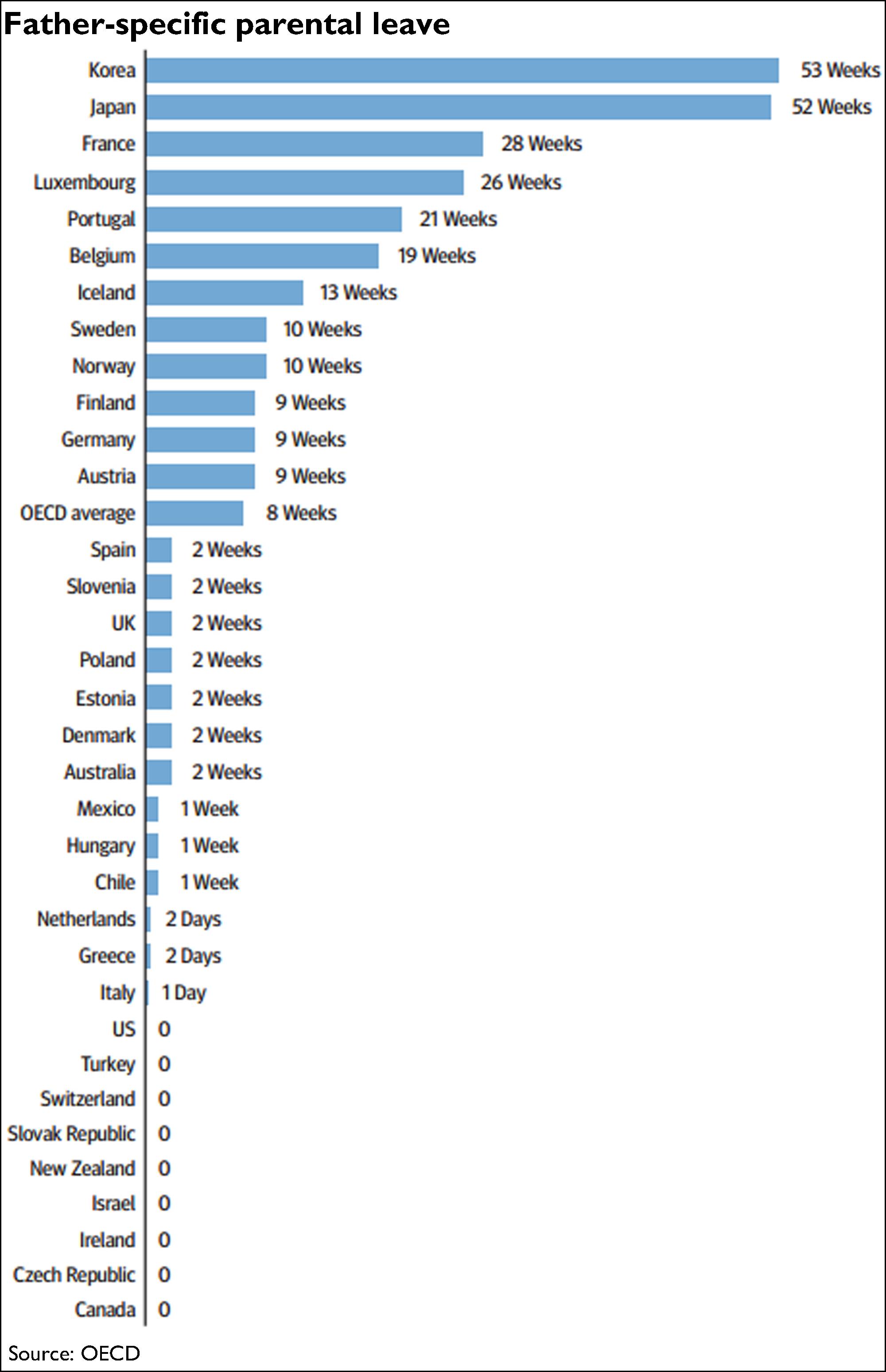Coming up short
Canada lags other OECD countries when it comes to “daddy quotas,” parental leave meant only for fathers.
Canada shares the bottom of the list with a handful of others, compared with the OECD average of eight weeks and Korea and Japan, which are at the top with more than 50 weeks.
It’s important, the Organization for Economic Co-Operation and Development said, because “father-specific leave seems to increase men’s uptake of parental leave.”

Canada has parental leave, and provinces have specific legislation. But a growing number of other countries have measures aimed at dads, which have many advantages, the OECD said in a report released in advance of International Women’s Day next Tuesday.
“If a father decides to take leave it does not affect his partner’s entitlement,” the organization said.
“Also, it legitimizes the idea of fathers taking parental leave, so easing potential objections from employers,” it added.
“Such father-specific parental leave, which typically lasts between two and three months, takes different forms. Most common are ‘daddy quotas,’ or specific portions of paid parental leave reserved as a non-transferable entitlement for the father. Some countries offer ‘bonus periods,’ where a couple may qualify for some extra weeks of paid leave if the father uses up a certain period of a sharable leave.”
In Sweden, the OECD said, the number of leave days among men doubled under a daddy quota. In South Korea, it tripled.
Men tend to take short leaves. But OECD research suggests men “are more likely to perform tasks such as feeding and bathing children,” which has a lasting impact, under parental leave.
There’s a big workplace issue, too.
“Parental leave may also help reduce discrimination against women in the workplace and particularly in hiring,” the OECD said.
“The reason is that if men and women are roughly equally likely to take leave, employers will be less reluctant to hire women of childbearing age.”
A scene I'd love to see ...

“We don't need to nuke them. He’s doing that on his own.”
Deficit widens slightly
Canada’s trade deficit widened only slightly in January, which is seen by economists as the second piece of better news this week.
The gap in trade with the world rose to $655-million from December’s $631-million as exports climbed 1 per cent and imports 1.1 per cent.
Look a little deeper and you’ll see that Canadian export volumes rose 3.6 per cent and prices slipped 2.5 per cent. On the import side, volumes rose 1.6 per cent, while prices dipped 0.5 per cent.
Exports to the U.S. climbed 2.6 per cent, outpacing the import side at 1.1 per cent, Statistics Canada said today.
“Although the expected weakness from aircraft shipments materialized, that was offset by a surge in consumer goods and motor vehicle exports,” CIBC World Markets economist Nick Exarhos said of the trade numbers.
“That’s encouraging news for those looking at the depreciation in the Canadian dollar as a catalyst in rotating the economy away from energy and housing, toward export growth and manufacturing investment.”
Good news, of course, is relative. Earlier in the week, Statistics Canada reported that the economy expanded at an annual rate of 0.8 per cent in the fourth quarter, weak but better than expected.